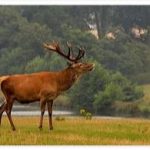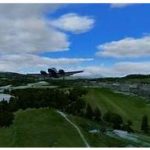Flora
According to ITYPETRAVEL, Italy has a high floristic richness: about 6800 species of vascular plants, 1130 bryophytes and a much greater number, although not exactly definable, of Prokaryotes, Protists, Algae and Mushrooms. The Italian vascular flora includes almost half of the species present in Europe and is also distinguished by a high number of endemics, equal to 10% of the entire flora. Interesting are the floristic relationships with distant regions or currently separated from the Italy from extensive stretches of sea: the flora of the Central and Southern Apennines has numerous species in common with the Balkan peninsula; the Sardinian-Corsican complex has several archaic species which are either their own or in common with the Balearic Islands or with some of the Tuscan islands. Endemics increase in number and systematic importance proceeding from N to S: Sicily and Sardinia,
The articulation of the relief and the presence of strong ecological gradients facilitate the fragmentation of the areas and the presence of a large number of habitats, often of limited size. The result is a considerable phenotypic variability that characterizes numerous groups of vascular plants, which can be interpreted as the result of a gene drift due to the geographic isolation of the populations of a given species. It is possible to distinguish in Italy three main ecoregions: the Alpine, the European-Continental and the Mediterranean, however the climatic and lithomorphological heterogeneity make it possible to identify, according to the most recent estimates, 67 landscape systems. Together with vast areas rather homogeneous in relation to the landscape, such as the Po Valley, the Umbrian-Marche hills, the Salento Peninsula, there are portions of the territory much more varied and articulated, for example. in the Alpine region, or in Calabria, Sicily, Sardinia.
The vegetable landscape of the Italy it would potentially consist of woody vegetation (forests and scrubland) covering 85% of the entire territory. In reality, only 30% of the national territory is covered by woods, with a total extension of about 10 million ha. Over the centuries, in fact, the primordial vegetation has been destroyed or altered by man, and the appearance of the landscape of many regions is completely different from the original one. The Alpine and also the Apennine mountains (as well as the Sicilian and the Corsican) had a mantle of coniferous forests at the top, with a prevalence of fir trees (in the Alps also larches etc.), further down an area of oak and beech forests. The beech has often been replaced by the chestnut, introduced by man in very remote times. Oak and other broad-leaved trees certainly once extended into the Po-Venetian plain, alternating with willow groves, poplar groves, etc., along watercourses and in the most humid places; with moors and thin herbaceous vegetation, in the drier regions. In the Italy peninsular, the low hills and the sublittoral and coastal plains were occupied by the Mediterranean scrub, which man has largely eradicated. Thus, the primordial plant landscape has gradually been replaced by a cultural landscape, whose physiognomy is largely determined by settlements, infrastructures and crops: the herbaceous ones are largely prevalent in the Po Valley, the arboreal ones (olive groves, vineyards, citrus groves) characterize vast areas of the South and the islands. The current plant landscape is also characterized by numerous ornamental plants,
Fauna
The eradication of the forest and scrub, the spread of agriculture and human population, was accompanied – as an inevitable consequence – by the deterioration of wildlife. In recent decades, however, environmental policies, the establishment of numerous protected areas, wildlife reintroduction projects and, last but not least, the gradual abandonment of mountain and agricultural areas have allowed many animal species a significant recovery. The most striking case is certainly that of the wolf (Canis lupus), whose range, once limited to some internal areas of the Central and Southern Apennines, now extends almost continuously from Calabria to the Western Alps. As for the Canids, the entry into the Italian fauna of the jackal (Canis aureus), which has penetrated from the northern areas of the Balkan Peninsula, and of the raccoon dog (Nyctereutes procyonoides), which has spread throughout most of Europe starting from farms, should also be noted. Russians. Among the Felids, the lynx (Lynx lynx) is found in the Alps. The otter (Lutra lutra) is confined to the south, in the waters of a few rivers in the peninsular regions, with small and perhaps isolated populations. Brown bear (Ursus arctos) is present in the Central Apennines with the largest population, and is expanding in the Eastern Alps, thanks to reintroductions and spontaneous arrivals from Slovenia and Croatia. The monk seal (Monachus monachus) has disappeared from the Italian coasts, except for occasional sightings. Many are, among the Artiodactyls, the roe deer (Capreolus capreolus), widespread in most of the country, the fallow deer (Dama dama) and especially the wild boar (Sus scrofa); the latter, mainly due to reckless reintroductions, has reached such a high density in some areas as to create serious environmental problems, given the strong impact of the species on flora and fauna. Also the mouflon (Ovis musimon), originally from Sardinia, has been introduced in many islands and in the Apennines. The number of ibex (Capra ibex) and chamois (Rupicapra rupicapra) is constantly increasing in the Alps. The population of the Abruzzo chamois (Rupicapra pyrenaica ornata) is increasing, so much so as to allow the reintroduction of the species in other Apennine groups, outside the original nucleus of the Abruzzo National Park. Among the rodents we should mention the porcupine (Hystrix cristata) and the nutria (Myocastor coypus), both species with great diffusion and in constant expansion.
As for the birds, some rare and important species have resumed nesting in Italy after decades of absence, either spontaneously or thanks to reintroduction projects; among these the griffon vulture (Gyps fulvus), the bearded vulture (Gypaetus barbatus), the white stork (Ciconia ciconia), the black stork (Ciconia nigra). Other species, including the cattle egret (Bubulcus ibis) and the Ural owl (Stryx uralensis), have colonized Italy lately. The collared parakeet (Psittacula krameri), of African and Asian origin, is now widespread in the parks of many Italian cities; the flamingo (Phoenicopterus ruber) has considerably expanded its distribution range.
Among the Reptiles there are numerous species of snakes, lizards and tortoises: the diffusion of the red-cheeked tortoise (Trachemys scripta), of American origin, which can be a problem for the ecology of freshwater environments, should be noted. Rather rare are sea turtles, of which only the Caretta caretta reproduces in Italy. The Amphibians include interesting species and some endemisms, such as the spectacled salamandrines: in the north Salamandrina perspicillata, replaced in the southern regions by the Salamandrina terdigitata. The olm (Proteus anguinus), groundwater urodel amphibian. Finally, as regards Pisces, there is a constant increase in tropical elements, especially as regards marine species.









